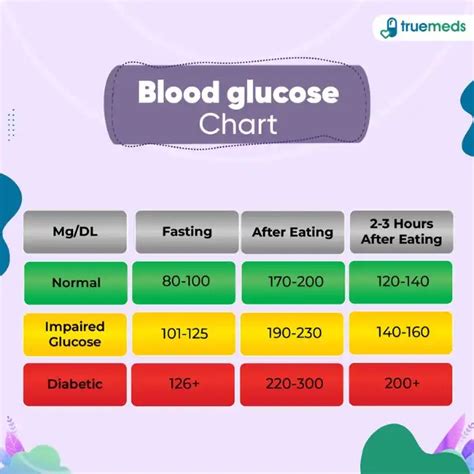Intro
Discover 5 ways to achieve healthy blood sugar levels, managing diabetes and insulin resistance through balanced diets, regular exercise, and natural supplements, promoting glucose control and overall wellbeing.
Maintaining healthy blood sugar levels is essential for overall well-being, as it can help prevent chronic diseases like diabetes, heart disease, and certain types of cancer. When we eat, our body breaks down carbohydrates into glucose, which is then absorbed into the bloodstream. The pancreas releases insulin, a hormone that helps regulate blood sugar levels by facilitating the entry of glucose into cells. However, when blood sugar levels become too high or too low, it can lead to a range of health problems. In this article, we will explore the importance of maintaining healthy blood sugar levels and provide tips on how to achieve it.
Healthy blood sugar levels are crucial for maintaining energy levels, supporting weight management, and preventing chronic diseases. When blood sugar levels are within a healthy range, the body can function optimally, and we are less likely to experience symptoms like fatigue, hunger, and irritability. On the other hand, high blood sugar levels can lead to serious health complications, including nerve damage, kidney damage, and increased risk of heart disease. Furthermore, low blood sugar levels can cause dizziness, confusion, and even loss of consciousness.
Maintaining healthy blood sugar levels requires a combination of a balanced diet, regular physical activity, and stress management. It is essential to be mindful of the foods we eat, as some can cause a spike in blood sugar levels, while others can help regulate them. Additionally, regular physical activity, such as walking or jogging, can help improve insulin sensitivity, making it easier for glucose to enter cells. Stress management techniques, like meditation or yoga, can also help reduce stress hormones that can raise blood sugar levels.
Understanding Blood Sugar Levels

Factors That Affect Blood Sugar Levels
Several factors can affect blood sugar levels, including diet, physical activity, stress, and sleep. A diet high in refined carbohydrates, sugar, and saturated fats can cause a spike in blood sugar levels, while a diet rich in whole foods, fiber, and healthy fats can help regulate them. Regular physical activity can also improve insulin sensitivity, making it easier for glucose to enter cells. Stress and lack of sleep can raise stress hormones, like cortisol, which can increase blood sugar levels.Maintaining Healthy Blood Sugar Levels

Benefits of Healthy Blood Sugar Levels
Maintaining healthy blood sugar levels can have numerous benefits, including: * Improved energy levels and reduced fatigue * Enhanced weight management and reduced risk of obesity * Lower risk of chronic diseases, like diabetes, heart disease, and certain types of cancer * Improved mental clarity and reduced risk of depression and anxiety * Healthier skin, hair, and nailsFoods That Help Regulate Blood Sugar Levels

Foods to Avoid
On the other hand, some foods can cause a spike in blood sugar levels and should be avoided or consumed in moderation. These include: * Refined carbohydrates, like white bread and sugary snacks * Sugary drinks, like soda and sports drinks * Saturated fats, like butter and lard * Processed meats, like hot dogs and sausages * Fried foods, like french fries and fried chickenPhysical Activity and Blood Sugar Levels

Stress Management and Blood Sugar Levels
Stress management is also crucial for maintaining healthy blood sugar levels. Chronic stress can raise stress hormones, like cortisol, which can increase blood sugar levels. Here are some stress management techniques that can help regulate blood sugar levels: * Meditation or mindfulness * Yoga or tai chi * Deep breathing exercises * Progressive muscle relaxation * Journaling or writingMonitoring Blood Sugar Levels

Working with a Healthcare Provider
Working with a healthcare provider is crucial for maintaining healthy blood sugar levels. A healthcare provider can help determine the best course of action for maintaining healthy blood sugar levels, including: * Developing a personalized diet plan * Creating a physical activity plan * Recommending stress management techniques * Monitoring blood sugar levels * Adjusting medications or treatments as neededWhat are the symptoms of high blood sugar levels?
+Symptoms of high blood sugar levels include increased thirst and urination, fatigue, blurred vision, and slow healing of cuts and wounds.
How can I prevent low blood sugar levels?
+To prevent low blood sugar levels, eat regular meals, avoid skipping meals, and monitor blood sugar levels regularly.
What are the benefits of maintaining healthy blood sugar levels?
+Maintaining healthy blood sugar levels can improve energy levels, enhance weight management, and reduce the risk of chronic diseases like diabetes, heart disease, and certain types of cancer.
In conclusion, maintaining healthy blood sugar levels is essential for overall well-being. By understanding the factors that affect blood sugar levels, incorporating a balanced diet, regular physical activity, and stress management techniques, and working with a healthcare provider, individuals can take control of their blood sugar levels and reduce the risk of chronic diseases. We invite you to share your thoughts and experiences on maintaining healthy blood sugar levels in the comments below. Additionally, if you found this article informative, please share it with your friends and family to help spread awareness about the importance of maintaining healthy blood sugar levels.
